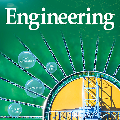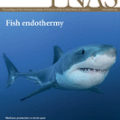Scientific literature is increasingly siloed by complex language, static disciplinary structures, and potentially sparse keyword systems, making it cumbersome to capture the dynamic nature of modern science. This study addresses these challenges by introducing an adaptable large language model (LLM)-driven framework to quantify thematic trends and map the evolving landscape of scientific knowledge. The approach is demonstrated over a 20-year collection of more than 1,500 engineering articles published by the Proceedings of the National Academy of Sciences (PNAS), marked for their breadth and depth of research focus. A two-stage classification pipeline first establishes a primary thematic category for each article based on its abstract. The subsequent phase performs a full-text analysis to assign secondary classifications, revealing latent, cross-topic connections across the corpus. Traditional natural language processing (NLP) methods, such as Bag-of-Words (BoW) and Term Frequency-Inverse Document Frequency (TF-IDF), confirm the resulting topical structure and also suggest that standalone word-frequency analyses may be insufficient for mapping fields with high diversity. Finally, a disjoint graph representation between the primary and secondary classifications reveals implicit connections between themes that may be less apparent when analyzing abstracts or keywords alone. The findings show that the approach independently recovers much of the journal's editorially embedded structure without prior knowledge of its existing dual-classification schema (e.g., biological studies also classified as engineering). This framework offers a powerful tool for detecting potential thematic trends and providing a high-level overview of scientific progress.
翻译:暂无翻译




